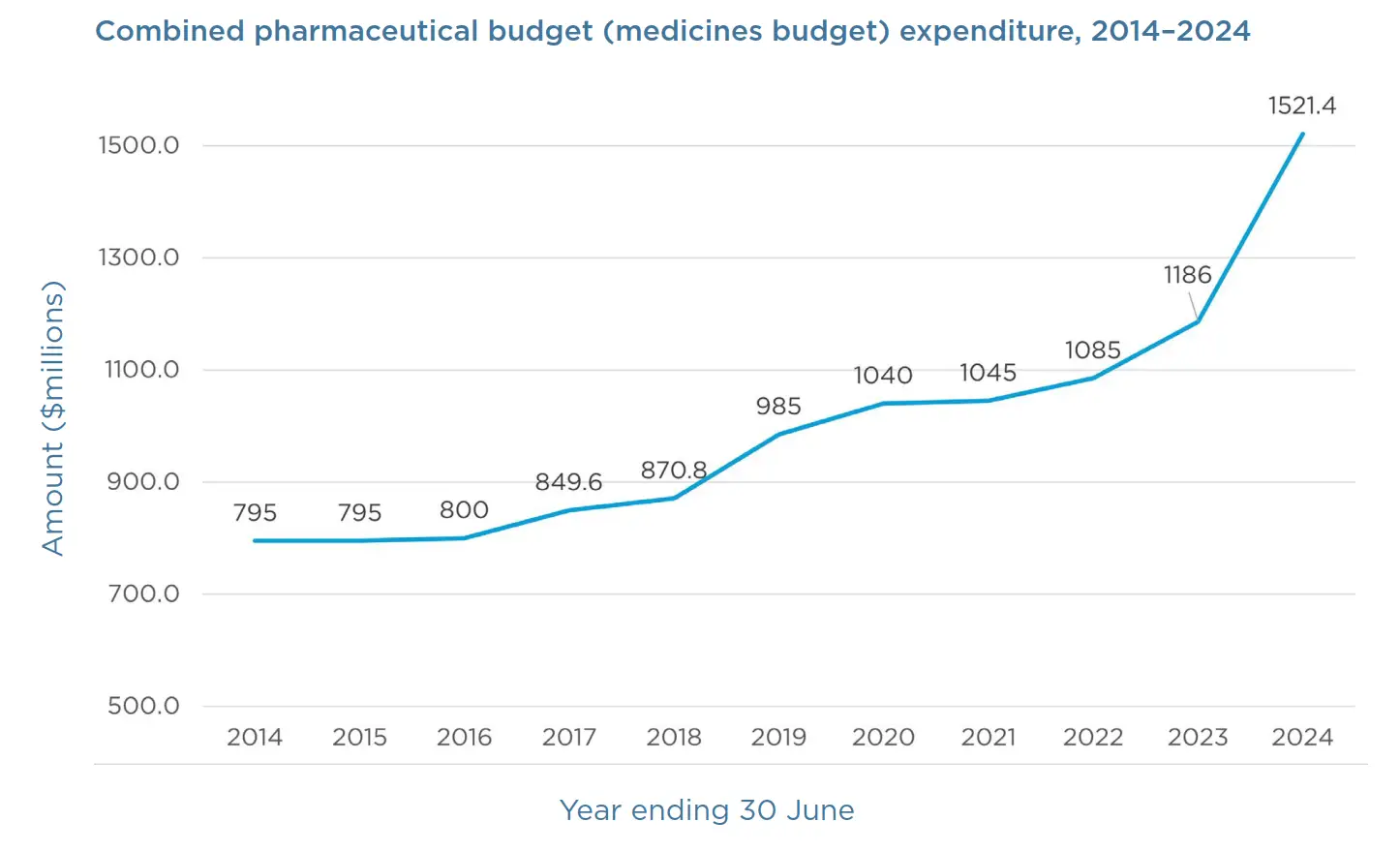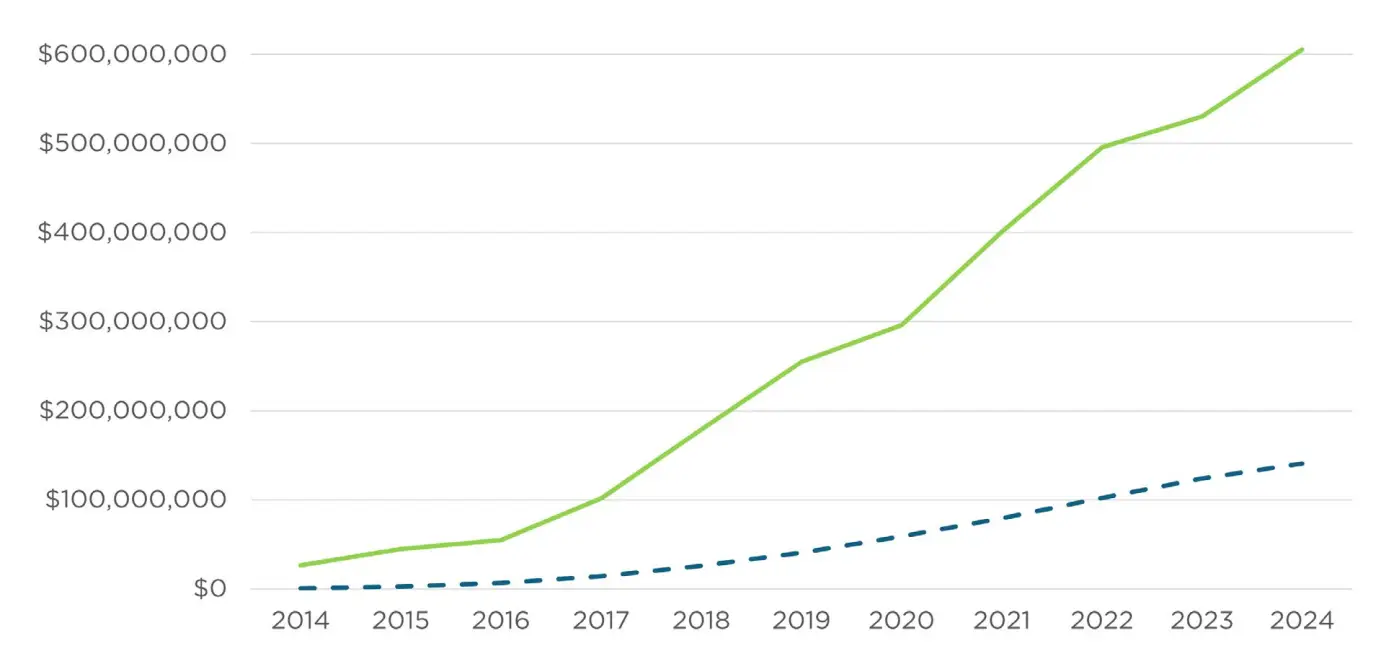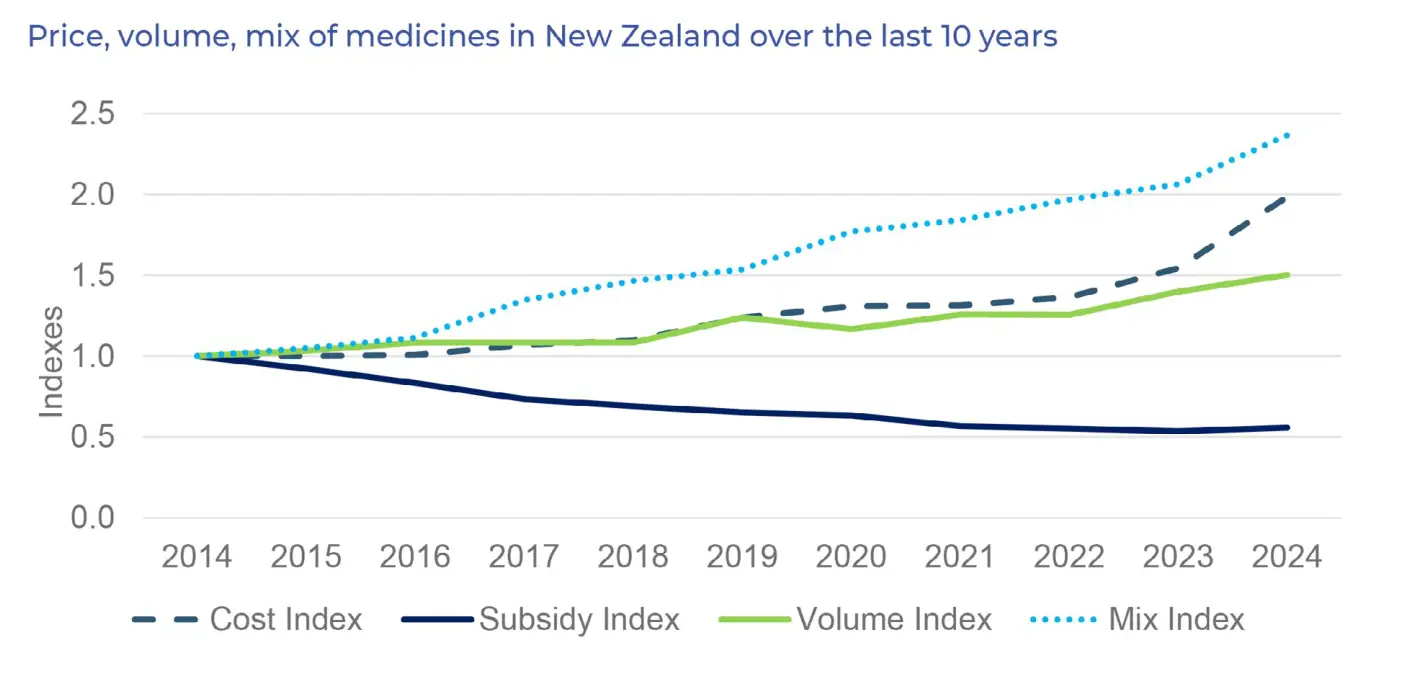Budget increase for more medicines
In June 2024, Pharmac received a $604 million increase to the medicines budget from the Government to fund or widen access to many more medicines, including cancer medicines.
Pharmac staff worked fast to turn this new money into the medicines that New Zealanders need
In just over 6 months, Pharmac had progressed proposals for 50 medicines for funding.
“We’re very aware that every dollar we spend has an impact,” says Director of Pharmaceuticals Geraldine MacGibbon.
“Our staff were ecstatic when we found out about the increase to the medicines budget. There are so many medicines that we want to fund and that we know New Zealanders need. Being able to make so many new
medicines available has been a career highlight for so many of us,” she says.
Expanding access
We started with medicines that were already funded for some conditions, but where we wanted to expand access – because we already had agreements in place for these medicines – it meant we could move fast.
“We had first funded pembrolizumab (brand name Keytruda) for some types of cancer in 2016, but we were very aware that more New Zealanders needed access to this life changing medicine,” she says.
Twelve days after the increase was announced, we opened consultation on our proposal to widen access to pembrolizumab for New Zealanders with five types of cancer, including breast cancer.
Just over three months later, people with these conditions could start their new treatments.
Funding new medicines
“We also looked at funding medicines that were on our priority lists, but where we didn’t have supply contracts in place with suppliers. These decisions took slightly longer, as our teams had to negotiate new contracts with suppliers,” she says.
In mid-September, Pharmac opened consultation on a proposal to fund medicines for lung cancer, breast cancer, and respiratory conditions as part of a bundle deal with the supplier AstraZeneca.
New treatment for breast cancer
From 1 January 2025, people with HER2-positive metastatic breast cancer could start their treatment on trastuzumab deruxtecan (brand name Enhertu).
Ah-Leen Rayner, Chief Executive of Breast Cancer Foundation NZ, said: “Every day, nine women in New Zealand are given the news they have breast cancer. While this can be devastating, having access to modern, safe, and effective treatments can offer the best opportunity for survival. But we know too many Kiwis are resorting to selling their homes or fundraising tens of thousands of dollars for unfunded medicines that could save or extend their lives. Many of these are widely accepted as standard or best practice drugs elsewhere in the world.
“The alarming reality is Kiwis with advanced breast cancer die at faster rates than women overseas and that’s largely due to fewer funded treatments. Having more investment for cancer drugs and faster approvals processes is what women with breast cancer need more of. With timely access to medicines like Enhertu, advanced breast cancer can become a chronic condition that women live with, rather than die from, but we also need drugs like Keytruda for early breast cancer to prevent women progressing to an incurable stage.”
Budget boost in numbers (as at 31st December 2024)
| Status | Cancer medicines | Non-cancer medicines | Total |
|---|---|---|---|
| Funded | 17 | 19 | 36 |
| Considering feedback | 3 | 3 | 6 |
| Consultation open | 7 | 1 | 8 |
| Total | 27 | 23 | 50 |
Pharmac manages a fixed budget set by the Government and decides which treatments will be funded. We’re also working on a new way of managing hospital medical devices.
Our job is to get the best health outcomes from treatments for New Zealanders, while staying within the fixed budget the Government sets. This means we must make difficult decisions about which treatments we will fund – there will always be more treatments we want to fund than we can afford.
Our budget has increased over time to enable us to fund new treatments, widen access to treatments already funded, and meet other costs, such as those related to price increases and population growth. To help free-up budget to fund new treatments, we also work hard to reduce the cost of the treatments we already fund.

Spend and savings for hospital medical devices, 2014–2024
This graph shows our impact on medical devices spending and savings over the past decade. The total annual expenditure under agreement line (solid line) shows how much hospitals have spent on devices we have under contract each year. The cumulative savings line (dotted line) shows what savings have accumulated through Pharmac’s national contracting.

Price, volume, mix, and subsidy for treatments in New Zealand, 2014–2024
This graph shows that the number of treatments (volume index) and the variety of treatments (mix index) have increased – meaning we’re seeing more, and varied, treatments in New Zealand. At the same time, the cost of treatments (the cost index) has increased but the actual price paid (the subsidy index) has decreased – showing Pharmac is getting more treatments for less money. The rise in the cost index represents the inclusion of COVID-19 treatments and vaccines in the CPB. From 1 July 2023, the budget for COVID-19 vaccines and treatments was added to the medicines budget.



